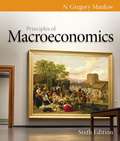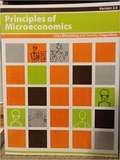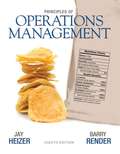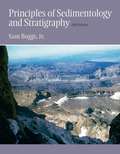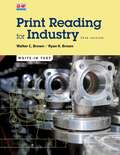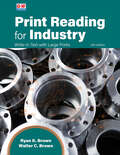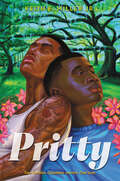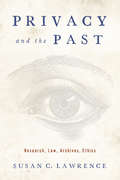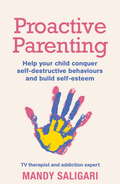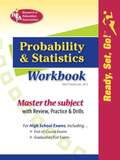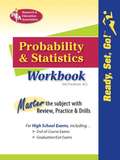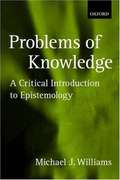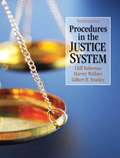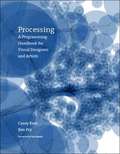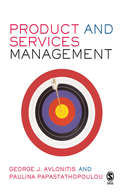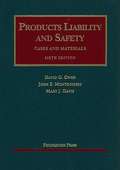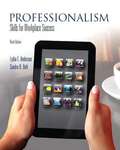- Table View
- List View
Principles of Macroeconomics
by Libby Rittenberg Timothy TregarthenFlat World Knowledge is honored to publish a new, first edition re-launch of Tim Tregarthen's wonderful principles of macroeconomics book, and proud to bring Tim's incredible talents as a teacher back to life so future generations of students can continue to learn from him. In 1996, he published the first edition of his principles of microeconomics textbook to great acclaim, and it became widely used in colleges around the country. That same year, MS made him wheelchair-bound. The disease forced his retirement from teaching at the University of Colorado at Colorado Springs in 1998. He lost the use of his arms in 2001 and has been quadriplegic ever since. Tim never let his disease get him down. In fact, he turned back to his love of writing and teaching for inspiration. He obtained a voice-activated computer, recruited a co-author, Libby Rittenberg of Colorado College, and turned his attention to revising his principles of economics book. Today we are excited to introduce Libby Rittenberg and Timothy Tregarthen's Principles of Macroeconomics. The authors teach economics as the study of "choice " by providing students with an accessible, straightforward overview of economics. This text combines the clarity and writing of Tregarthen's seminal periodical "The Margin" with great teaching insights. Rittenberg and Tregarthen help students to understand how real individuals actually work with economics. In this new book, the authors illustrate the practicality and relevance of economics with a variety of new illustrations and insights. The authors take a three-pronged approach to every concept: (1) the concept is covered with a "Heads Up" to ward off confusion, (2) a "You Try It" section makes sure students are staying on top of the concept and (3) a "Case and Point" section that uses a real-world application to harness the concept in reality. For one example of how this plays out in the text see "Chapter 3, Section 2 on Supply".here This book is intended for a one-semester course in Macroeconomics taught out the social sciences or business school.
Principles of Macroeconomics (Eleventh Edition)
by Ray C. Fair Karl E. Case Sharon OsterCollege economics textbook.
Principles of Macroeconomics 6th Edition
by N. Gregory MankiwPRINCIPLES OF MACROECONOMICS, Sixth Edition, became a best seller after its introduction and continues to be the most popular and widely used text in the economics classroom. Instructors found it the perfect complement to their teaching. A text by a superb writer and economist that stressed the most important concepts without overwhelming students with an excess of detail was a formula that was quickly imitated, but has yet to be matched. The sixth edition features a strong revision of content in all twenty-three chapters. Dozens of new applications emphasize the real-world relevance of economics for today's students through interesting news articles, realistic case studies, and engaging problems.
Principles of Macroeconomics, Aplia Edition (6th Edition)
by N. Gregory MankiwThis book "Principles of Macroeconomics, Aplia Edition" contains nine parts covering topics on: The Real Economy in the Long Run, Money and Prices in the Long Run, The Macroeconomics of Open Economies, Short Run Economic Fluctuations, and Final Thoughts.
Principles of Management
by Talya Bauer Mason Carpenter Berrin ErdoganPrinciples of Management by Carpenter, Bauer and Erdogan teaches management principles to tomorrow's business leaders by weaving three threads through every chapter: strategy, entrepreneurship and active leadership. Strategic: All business school teachings have some orientation toward performance and strategy and are concerned with making choices that lead to high performance. Principles of Management will frame performance using the notion of the triple bottom-line the idea that economic performance allows individuals and organizations to perform positively in social and environmental ways as well. The triple bottom line is financial, social, and environmental performance. It is important for all students to understand the interdependence of these three facets of organizational performance. The Entrepreneurial Manager: While the General Management course at Harvard Business School was historically one of its most popular and impactful courses (pioneered in the 1960s by Joe Bower), recent Harvard MBAs did not see themselves as general managers. This course was relabeled 'The Entrepreneurial Manager' in 2006, and has regained its title as one of the most popular courses. This reflects and underlying and growing trend that students, including the undergraduates this book targets, can see themselves as entrepreneurs and active change agents, but not just as managers. By starting fresh with an entrepreneurial/change management orientation, this text provides an exciting perspective on the art of management that students can relate to. At the same time, this perspective is as relevant to existing for-profit organizations (in the form intrapreneurship) as it is to not-for-profits and new entrepreneurial ventures. Active Leadership: Starting with the opening chapter, Principles of Management show students how leaders and leadership are essential to personal and organizational effectiveness and effective organizational change. Students are increasingly active as leaders at an early age, and are sometimes painfully aware of the leadership failings they see in public and private organizations. It is the leader and leadership that combine the principles of management (the artist's palette, tools, and techniques) to create the art of management. Cases: Mason provides brief cases in his Instructors Manual for those who take a case approach to the course or who wish to incorporate cases. This book's modular format easily maps to a POLC course organization (Planning, Organizing, Leading, and Controlling, attributed to Henri Fayol (1949, General and industrial management. London. Pitman Publishing company), and suits the needs of most undergraduate or graduate course in Principles of Management.
Principles of Marketing (Sixteenth Edition)
by Gary Armstrong Philip KotlerPrinciples of Marketing Is the most-trusted source for teaching and learning basic marketing concepts and practices. More than ever, the sixteenth edition introduces new marketing students to the fascinating world of modern marketing in an innovative, complete, and authoritative yet fresh, practical, and enjoyable way. In this sixteenth edition, we've once again added substantial new content and poured over every page, table, figure, fact, and example in order to keep this the best text from which to learn about and teach marketing. Enhanced by MyMarketingLab, our online homework and personalized study tool, the sixteenth edition of Principles of Marketing remains the world standard in introductory marketing education.
Principles of Marketing 2.0
by Jeff Tanner Mary Anne RaymondPrinciples of Marketing Version 2.0 by Tanner, Raymond and Schuster teaches the experience and process of actually doing marketing - not just the vocabulary. It carries five dominant themes throughout in order to expose students to marketing in today's environment: Service dominant logic - This textbook employs the term "offering" instead of the more traditional First "P" -- product. That is because consumers don't sacrifice value when alternating between a product and a service. They are evaluating the entire experience, whether they interact with a product, a service, or a combination. So the fundamental focus is providing value throughout the value chain, whether that value chain encompasses a product, service, or both. Sustainability; Increasingly, companies are interested in the impact they are having on their local community as well as the overall environment. This is often referred to as the triple bottom line of financial, social, and environment performance. Ethics and social responsibility; Following on the sustainability notion is the broader importance of ethics and social responsibility in creating successful organizations. The authors make consistent references to ethical situations throughout chapter coverage, and end of chapter material in most chapters will encompass ethical situations. Global coverage -- Tanner, Raymond and Schuster deliberately entitled Chapter 1; What is Marketing?; Whether it is today's price of gasoline, the current U.S. presidential race, or Midwestern U.S. farming, almost every industry and company needs strong global awareness. And today's marketing professionals must understand the world in which they and their companies operate. Metrics -- Firms today have the potential to gather more information than ever before about their current and potential customers. That information gathering can be costly, but it can also be very revealing. With the potential to capture so much more detail about micro transactions, firms should now be more able to answer ;well, what this marketing strategy really worth it?; And what is the marketing ROI?; And finally, what is this customer or set of customers worth to us over their lifetime? Principles of Marketing Version 2.0 brings new and updated coverage of new developments in the influence of social media to empower consumers, as well as marketing's use of social media, such as sentiment analysis, mobile marketing, and customer service and complaint tracking, as a communications and promotion channel, just a name a few. Version 2.0 also has an overall increased number of examples, as well as, new discussion questions in every chapter (resulting in at least 10 per chapter). In addition, the textbook's key terms, and repeated concepts have been strategically arranged to make customizing this book with Flat World's MIYO platform even easier.
Principles of Microeconomics (2nd Edition)
by Timothy TaylorA textbook that is rooted to help students perform well in introductory economics and acquire the basic tools to deal with economics.
Principles of Microeconomics 2.0
by Libby Rittenberg Timothy TregarthenFlat World Knowledge is honored to publish Version 2.0 (an orginal re-launch) of Tim Tregarthen's wonderful principles of microeconomics book, and proud to bring Tim's incredible talents as a teacher back to life so future generations of students can continue to learn from him.
Principles of Operations Management (Eighth Edition)
by Jay Heizer Barry RenderThis book presents a state-of-the- art view of the activities of the operations function. This book will also help you understand how OM affects society and your life.
Principles of Sedimentology and Stratigraphy (Fifth Edition)
by Sam BoggsThis concise treatment of the fundamental principles of sedimentology and stratigraphy highlights the important physical, chemical, biological, and stratigraphic characteristics of sedimentary rocks. It emphasizes the ways in which the study of sedimentary rocks is used to interpret depositional environments, changes in ancient sea level, and other intriguing aspects of Earth's history.
Print Reading for Construction: Residential and Commercial: Write-in Text With 140 Large Prints
by Walter C. Brown Daniel P. DorfmuellerPrint Reading for Construction provides a practical way to learn and master the skill of print reading for construction. It is a combination text-workbook that teaches the interpretation and visualization of residential and commercial construction prints. The text starts with the basics and progresses to advanced topics. The content is ideal for career and technical students, apprentices, and building trades workers in addition to being suitable for self‑study.
Print Reading for Industry
by Walter C. Brown & Ryan K. BrownPrint Reading for Industry is a combination text and write-in workbook designed to assist students in reading and understanding industrial prints. The text starts with the basics of print reading and progresses to advanced topics. It presents a thorough discussion of print reading techniques, providing the necessary information and guidance to read the "language of industry" Print Reading for Industry incorporates the latest ASME standards and includes authentic industrial prints for hands-on learning. Bonus print reading exercises related to the oversized prints in the Large Prints Packet provide additional real-life print reading experiences.
Print Reading for Industry: Write-In Text with Large Prints
by Walter C. Brown Ryan K. BrownPrint Reading for Industry is a robust text that focuses on interpreting and visualizing drawings and prints used in industrial settings. It is designed for beginning and intermediate students, those pursuing on-the-job training, and apprenticeship programs. It provides coverage of several foundational skills needed for print reading success, including basic mathematics, engineering drawings, geometry principles, measurement tools, and the design process. This revised edition features new and revised figures, new and updated drawings and industry prints, significant updates reflecting the latest ASME standards, and a new video library. The many prints found in the text are supplemented with an accompanying print packet containing 22 large-size industry prints for further practice. These prints are available as PDFs for classroom display and discussion, available in the student and instructor online resources. In addition, 3D model PDF and STL files for parts featured in the text are available for visualization practice and 3D printing. Numerous visualization and print reading exercises provide hands-on experience and build spatial reasoning skills.
Pritty
by Keith F. Miller, Jr.Concrete Rose meets Things We Couldn’t Say in Pritty, a debut novel by Keith F. Miller Jr.—the inspiration behind the forthcoming animated short film of Kickstarter fame—that follows two boys who get caught in the crossfire of a sinister plot that not only threatens everything they love but may cost them their own chance at love. On the verge of summer before his senior year, Jay is a soft soul in a world of concrete. While his older brother is everything people expect a man to be—tough, athletic, and in charge—Jay simply blends into the background to everyone, except when it comes to Leroy.Unsure of what he could have possibly done to catch the eye of the boy who could easily have anyone he wants, Jay isn’t about to ignore the surprising but welcome attention. But as everything in his world begins to heat up, especially with Leroy, whispered rumors over the murder of a young Black journalist and long-brewing territory tensions hang like a dark cloud over his neighborhood. And when Jay and Leroy find themselves caught in the crossfire, Leroy isn’t willing to be the reason Jay’s life is at risk.Dragged into the world of the Black Diamonds—whose work to protect the Black neighborhoods of Savannah began with his father and now falls to his older brother—Leroy knows that finding out who attacked his brother is not only the key to protecting everyone he loves but also the only way he can ever be with Jay. Wading through a murky history of family trauma and regret, Leroy soon discovers that there’s no keeping Jay safe when Jay’s own family is in just as deep and fighting the undertow of danger just as hard.Now Jay and Leroy must puzzle through secrets hiding in plain sight and scramble to uncover who is determined to eliminate the Black Diamonds before someone else gets hurt—even if the cost might be their own electric connection.
Privacy and the Past: Research, Law, Archives, Ethics
by Susan C. LawrenceWhen the new HIPAA privacy rules regarding the release of health information took effect, medical historians suddenly faced a raft of new ethical and legal challenges--even in cases where their subjects had died years, or even a century, earlier. In Privacy and the Past, medical historian Susan C. Lawrence explores the impact of these new privacy rules, offering insight into what historians should do when they research, write about, and name real people in their work. Lawrence offers a wide-ranging and informative discussion of the many issues involved. She highlights the key points in research ethics that can affect historians, including their ethical obligations to their research subjects, both living and dead, and she reviews the range of federal laws that protect various kinds of information. The book discusses how the courts have dealt with privacy in contexts relevant to historians, including a case in which a historian was actually sued for a privacy violation. Lawrence also questions who gets to decide what is revealed and what is kept hidden in decades-old records, and she examines the privacy issues that archivists consider when acquiring records and allowing researchers to use them. She looks at how demands to maintain individual privacy both protect and erase the identities of people whose stories make up the historical record, discussing decisions that historians have made to conceal identities that they believed needed to be protected. Finally, she encourages historians to vigorously resist any expansion of regulatory language that extends privacy protections to the dead. Engagingly written and powerfully argued, Privacy and the Past is an important first step in preventing privacy regulations from affecting the historical record and the ways that historians write history.
Proactive Parenting: Help your child conquer self-destructive behaviours and build self-esteem
by Mandy SaligariTake a proactive approach towards your child's mental health and discover how to have the conversations that will be life-saving and life-changing.With a foreword by Benny Refson, President of the children's mental health charity Place2BeThe pressures faced by children and adolescents today are unprecedented, and the corresponding statistics around poor mental health deeply alarming. Behind every mental health issue, from addiction to ADHD, lies a host of underlying problems that need addressing but as a worried parent it's hard to know where to focus. What do you do if your child struggles with anxiety? Is self-harming? Has developed an unhealthy relationship with eating, exercise, technology or alcohol?Proactive in approach, top addiction therapist Mandy Saligari provides the tools to help you identify and address the self-destructive patterns of behaviour, to stop them in their tracks. Her practical framework reveals how you can adapt your own behaviour and equip your child to develop emotional intelligence, resilience and self-esteem.
Probability & Statistics Workbook: Classroom Edition (Mathematics Learning And Practice Ser.)
by Mel FriedmanREA's Probability & Statistics Workbook is a Perfect Study Tool for Exit Exams, End-of-Course Exams, or Graduation Exams What makes REA's workbooks different? For starters, students will actually like using them. Here's why: * Math is explained in simple language, in an easy-to-follow style * The workbooks allow students to learn at their own pace and master the subject * More than 20 lessons break down the material into the basics * Each lesson is fully devoted to a key math concept and includes many step-by-step examples * Paced instruction with drills and quizzes reinforces learning * Innovative "Math Flash" feature offers helpful tips and strategies in each lesson--including advice on common mistakes to avoid * Skill scorecard measures the student's progress and success * Every answer to every question, in every test, is explained in full detail * A final exam is included so students can test what they've learned Some of the math topics covered in the Ready, Set, Go! Probability & Statistics Workbook include: * Organizing Data into Tables and Charts * Measures of Central Tendency * Frequency Distributions * Classical and Empirical Probability * Compound Events * Counting Methods When students apply the skills they've mastered in our workbooks, they can do better in class, raise their grades, and score higher on the all-important end-of-course, graduation, and exit exams.
Probability and Statistics Workbook (Mathematics Learning And Practice Ser.)
by Mel FriedmanProbability and Statistics Workbook an Easy-to-Use Workbook Series for Students Struggling with Math A Perfect Study Tool for Exit Exams, End-of-Course Exams, or Graduation Exams. Many students continue to struggle in high school math courses because they failed to master the basic mathematical skills. REA's Ready, Set, Go! Workbook series takes the confusion out of math, helping students raise their grades and score higher on important exams. What makes REA's workbooks different? Students will actually like using them. Here's why: * Math is explained in simple language, in an easy-to-follow style * The workbooks allow students to learn at their own pace and master the subject * Each lesson is devoted to a key math concept and includes step-by-step examples * Paced instruction with drills and quizzes reinforce learning * Every answer to every question, in every test, is explained in full detail * A final exam lets students test what they've learned. When students apply the skills they've mastered in our workbooks, they can do better in class, raise their grades, and score higher on the all-important end-of-course, graduation, and exit exams Whether used in a classroom, for home or self-study, or with a tutor, this workbook gets students ready for important math tests and exams, set to take on new challenges, and helps them go forward in their studies!
Problems of Knowledge: A Critical Introduction to Epistemology
by Michael WilliamsProblems of Knowledge provides clear and engaging explanations of the theory of knowledge and why it matters, offering an excellent foundation for students in introductory epistemology courses.
Procedures in the Justice System (10th Edition)
by Cliff Roberson Harvey WallaceProcedures in the Justice System, 10e, is comprehensive yet readable. Designed for one-semester courses on American criminal courts, it covers the court systems and processes using a sequential approach-following law violators from arrest to conviction and sentencing. Each chapter examines the roles that law enforcement agencies, courts, and correctional departments play in the process, and builds logically on previous material. Down-to-earth examples, illustrations, court documents, and cases help make procedures more real and concrete.
Processing: A Programming Handbook for Visual Designers and Artists
by Ben Fry John Maeda Casey ReasAn introduction to the ideas of computer programming within the context of the visual arts that also serves as a reference and text for Processing, an open-source programming language designed for creating images, animation, and interactivity.
Product and Services Management
by Paulina Papastathopoulou George J. Avlonitis`A text that successfully bridges the gap between academic theorizing and practitioner applicability because it uses multiple real-world examples/mini-cases of management techniques to illustrate the well-researched academic theoretical foundations of the book' - Creativity and Innovation Management `A complete and useful treatment of the domain of product and service decisions. This book is unique in its treatment, dealing with product and service portfolio evaluation, new product/service development and product/service elimination in an integrated manner. Enlivened by many mini-cases, the book provides a soup-to-nuts approach that will prove very attractive for students and be a valuable reference for managers as well. Highly recommended' - Gary L Lilien, Distinguished Research Professor of Management Science, Penn State University `Product and Services Management (PSM) is a welcome, up to date summary of the key issues facing firms in developing and refreshing their portfolios. The examples and cases bring the academic arguments clearly into focus and demonstrate the crucial role of PSM in leading the overall strategy of the firm' - Professor Graham Hooley, Senior Pro-Vice-Chancellor, Aston University, Birmingham `Managers responsible for and students interested in product portfolio decisions previously had to consult several sources for obtaining up-to-date information; books on new product development, articles on service development, readers on product management, and frameworks for product evaluation and termination. With the book Product and Services Management the reader obtains four-in-one. Avlonitis and Papastathopoulou reveal in a compelling and comprehensive manner why product decisions are the cornerstone of modern marketing and business, and illustrate the theory with numerous mini-cases from Europe and elsewhere. A must read for everyone with a passion for products' - Dr Erik Jan Hultink, Professor of New Product Marketing, Delft University of Technology This book provides a holistic approach to the study of product and services management. It looks at the key milestones within a product's or service life cycle and considers in detail three crucial areas within product management, namely product/service portfolio evaluation, new product/service development and product/service elimination. Based on research conducted in Europe and North America, this book includes revealing cases studies that will help students make important connections between theory and practice. The pedagogical features provided in each chapter include chapter introduction, summary, questions and a further reading section. Additional material for instructors include PowerPoint slides and indicative answers to each chapter's questions. This book is written for undergraduate and postgraduate students of business administration who are pursuing courses in marketing, product portfolio management, new product development and product policy.
Products Liability and Safety: Cases and Materials (Sixth Edition)
by Mary Davis David Owen John MontgomeryThe new edition of this classic casebook continues its long tradition of sensitively exploring products liability law and theory. The Sixth Edition includes significant new materials on such topics as design defects, warning defects, special issues on causation, federal preemption (including Wyeth v. Levine on pharmaceutical preemption), toxic substances (including important new material on medical monitoring), and punitive damages (including Philip Morris v. Williams). Daubert issues and the Products Liability Restatement are integrated throughout. Previous editions of this classic casebook have been adopted at over 100 law schools such as Harvard, Yale, Penn, NYU, Michigan, Duke, Georgetown, and Texas
Professionalism Skills for Workplace Success (Third Edition)
by Lydia E. Anderson Sandra B. BoltThe book designed as a workbook that can be kept and referred to throughout one's career addresses employer concerns by providing those new to the workplace with basic skills for success on the job and providing job seekers the tools they need to secure the job of their dreams. This unique text prepares students for their first professional workplace experience by linking self-management issues to career planning tools and workplace basics, including expected behaviors.

